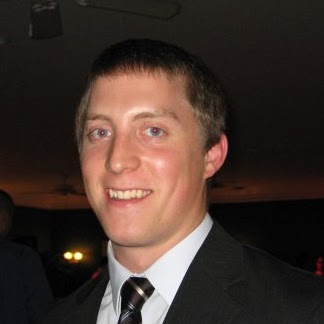Christopher A Spence
age ~63
from Los Altos, CA
- Also known as:
-
- Christopher Alan Spence
- Chris A Spence
- Christo A Spence
- Christphr A Spence
- Christophe Spence
- Cheryl Spence
- John Shiju
- Phone and address:
- 1561 Niblick Ave, Los Altos, CA 94024
Christopher Spence Phones & Addresses
- 1561 Niblick Ave, Los Altos, CA 94024
- 1145 Andover Dr, Sunnyvale, CA 94087
- 756 Cragmont Ave, Berkeley, CA 94708
- 1735 Delaware St, Berkeley, CA 94703
- Miracle, KY
- Burlington, VT
- Santa Clara, CA
Work
-
Company:National democratic institute for international affairs (ndi)2007
-
Position:Chief technology officer - full it & client-facing systems authority
Education
-
School / High School:San Francisco State University- San Francisco, CA1994
-
Specialities:MASTER OF ARTS (all except thesis) in INTERNATIONAL RELATIONS
Skills
Cloud Computing & Virtualization: Am... • S3; VMware; Hyper-V; Google Apps; Salesf... • Basecamp; RemedyForce; CDN (CloudFront • EdgeCast) Mobile: Android; Clickate... • Linux; Drupal • CiviCRM • MySQL • Liferay Portal; TOR • TAILS; OpenSSO Network • Systems • & Security: Firewalls; Cisco IronPort • Prime; Carbon Black; Bit9; DDOS Mitigati...
Isbn (Books And Publications)

Medicine Doctors

Christopher R. Spence
view sourceSpecialties:
General Surgery
Work:
Steelhead Surgery
2801 NW Mercy Dr STE 330, Roseburg, OR 97471
(541)6773600 (phone), (541)6773601 (fax)
2801 NW Mercy Dr STE 330, Roseburg, OR 97471
(541)6773600 (phone), (541)6773601 (fax)
Education:
Medical School
Thomas Jefferson University, Jefferson Medical College
Graduated: 1996
Thomas Jefferson University, Jefferson Medical College
Graduated: 1996
Procedures:
Endoscopic Retrograde Cholangiopancreatography (ERCP)
Hernia Repair
Laparoscopic Gallbladder Removal
Small Bowel Resection
Thoracoscopy
Appendectomy
Colonoscopy
Gallbladder Removal
Hemorrhoid Procedures
Laparoscopic Appendectomy
Mastectomy
Proctosigmoidoscopy
Upper Gastrointestinal Endoscopy
Hernia Repair
Laparoscopic Gallbladder Removal
Small Bowel Resection
Thoracoscopy
Appendectomy
Colonoscopy
Gallbladder Removal
Hemorrhoid Procedures
Laparoscopic Appendectomy
Mastectomy
Proctosigmoidoscopy
Upper Gastrointestinal Endoscopy
Conditions:
Abdominal Hernia
Appendicitis
Benign Neoplasm of Breast
Breast Disorders
Breast Neoplasm, Malignant
Appendicitis
Benign Neoplasm of Breast
Breast Disorders
Breast Neoplasm, Malignant
Languages:
English
Description:
Dr. Spence graduated from the Thomas Jefferson University, Jefferson Medical College in 1996. He works in Roseburg, OR and specializes in General Surgery. Dr. Spence is affiliated with Mercy Medical Center.
Name / Title
Company / Classification
Phones & Addresses
THE NEW GROWTH GROUP, LLC
SPENCE PROPERTY MANAGEMENT, LLC
DTR 2, LLC
Us Patents
-
Piezo Programmable Reticle For Euv Lithography
view source -
US Patent:6356340, Mar 12, 2002
-
Filed:Nov 20, 1998
-
Appl. No.:09/197020
-
Inventors:Christopher A. Spence - Sunnyvale CA
-
Assignee:Advanced Micro Devices, Inc. - Sunnyvale CA
-
International Classification:G03B 2742
-
US Classification:355 53, 430 5
-
Abstract:A programmable reticle has a plurality of addressable pixels. Each of the pixels has one or more elastic elements which underlie a reflective surface, the elements each being activatable for selectively deforming part of the reflective surface. The amount of deformation is such that light reflected from a deformed part destructively interferes with light reflected from the vicinity of the deformed part. The programmable reticle may be used as a part of a scanning lithography system wherein a wafer or other device to be exposed is moved to expose different of its areas, while the pattern on the programmable reticle is changed to reflect the desired exposure pattern of the area of the wafer currently being exposed. In such a scanning system, any given point on the wafer will be exposed using a number of different pixels on the reticle; therefore the effect of a defective pixel will be âdilutedâ or âvoted outâ by the other, non-defective pixels also involved in exposing that spot.
-
Simultaneous Heating And Exposure Of Reticle With Pattern Placement Correction
view source -
US Patent:6437348, Aug 20, 2002
-
Filed:Oct 21, 1999
-
Appl. No.:09/422310
-
Inventors:Christopher F. Spence - Sunnyvale CA
-
Assignee:Advanced Micro Devices, Inc. - Sunnyvale CA
-
International Classification:A61N 500
-
US Classification:2504912, 2504921
-
Abstract:A device for exposing and heating a substrate coated with resist includes an exposure tool for selectively exposing the resist, and a heater for heating the exposed resist, the exposure tool and the heater able to simultaneously act on different portions of the resist. A method of patterning resist on a substrate includes the steps of selectively exposing the resist on the first portion of the substrate, heating the resist on the first portion, and simultaneously or thereafter selectively exposing the resist on a second portion of the substrate. In an exemplary embodiment the exposure tool is an electron beam generator for exposing a chemically-amplified resist, and the heater is a light source such as a laser light source which does not appreciably expose the resist. The device and method allow a post-exposure heating with a smaller delay between the exposure and the heating than with conventional methods, which involve exposing a reticle and mask completely before heating by baking.
-
Characterization And Synthesis Of Opc Structures By Fourier Space Analysis And/Or Wavelet Transform Expansion
view source -
US Patent:6492066, Dec 10, 2002
-
Filed:May 28, 1999
-
Appl. No.:09/321089
-
Inventors:Luigi Capodieci - Sunnyvale CA
Christopher A. Spence - Sunnyvale CA -
Assignee:Advanced Micro Devices, Inc. - Sunnyvale CA
-
International Classification:G03F 900
-
US Classification:430 5, 716 21
-
Abstract:A method ( ) of characterizing optical proximity correction designs includes performing a mathematical transform ( ) on a first feature ( ) and a second feature ( ) each having a core portion ( ) and a first OPC design and a second OPC design applied thereto, respectively. The method ( ) further includes obtaining a metric (162) for the transformed first and second features, wherein the metric is based upon a capability of a pattern transfer system which will utilize masks employing the first and second features ( ) as a patterns thereon. One of the first feature or the second feature is then selected ( ) based upon an application of the metric to the first and second transformed features ( ), thereby selecting the one of the first feature or the second feature which provides for a better pattern transfer performance.
-
Utilizing Electrical Performance Data To Predict Cd Variations Across Stepper Field
view source -
US Patent:6562639, May 13, 2003
-
Filed:Nov 6, 2001
-
Appl. No.:09/993166
-
Inventors:Anna Minvielle - San Jose CA
Luigi Capodieci - Santa Cruz CA
Christopher Spence - Sunnyvale CA -
Assignee:Advanced Micro Devices, Inc. - Sunnyvale CA
-
International Classification:H01L 2166
-
US Classification:438 14
-
Abstract:In order to determine an amount of critical dimension variation to expect across a surface of a final production wafer, a plurality of test structures are formed on a test wafer. The test structures are preferably of a type commonly found on the final production wafer and may for example, include transistors, ring oscillators, resistors and/or diodes. Electrical parameter testing of the test structures is next conducted in order to obtain one or more electrical performance values for each test structure. For example, the electrical performance values may correspond to processing speed, drive current, and/or off-state current of the test structures. A correlation between the electrical performance values and expected critical dimension variations is then performed and a report is generated providing the expected critical dimension variations across the surface of the wafer. Expected critical dimension variations may be accounted for by varying characteristics of devices used during a photolithographic transfer process to the final production wafers.
-
Method Of And System For Improving Stability Of Photomasks
view source -
US Patent:6627355, Sep 30, 2003
-
Filed:Dec 20, 2000
-
Appl. No.:09/742970
-
Inventors:Harry J. Levinson - Saratoga CA
Fan Piao - Fremont CA
Christopher A. Spence - Sunnyvale CA -
Assignee:Advanced Micro Devices, Inc. - Sunnyvale CA
-
International Classification:G03F 900
-
US Classification:430 5
-
Abstract:The present invention provides a method of and system for reducing the absorption of light by opaque material in a photomask. The method includes providing a photomask substrate, and applying an opaque material to one side of the photomask substrate. The interface between the opaque material and photomask substrate reflects at least 80 percent of the light through the photomask.
-
Method Of Enhancing Clear Field Phase Shift Masks By Adding Parallel Line To Phase 0 Region
view source -
US Patent:6675369, Jan 6, 2004
-
Filed:Dec 11, 2001
-
Appl. No.:10/016702
-
Inventors:Todd P. Lukanc - San Jose CA
Christopher A. Spence - Sunnyvale CA -
Assignee:Advanced Micro Devices, Inc. - Sunnyvale CA
-
International Classification:G06F 1750
-
US Classification:716 21, 716 19, 430 4
-
Abstract:A technique in which a boundary region is added to the outside parallel edge of phase zero (0) pattern defining polygons. This technique can reduce the need for optical proximity correction (OPC) and improve the manufacturability and patterning process window for integrated circuits. The technique can also set the width of both phase 0 and phase 180 polygons to specific sizes, making OPC easier to assign.
-
Method Of Enhancing Clear Field Phase Shift Masks With Border Regions Around Phase 0 And Phase 180 Regions
view source -
US Patent:6749970, Jun 15, 2004
-
Filed:Dec 11, 2001
-
Appl. No.:10/016273
-
Inventors:Todd P. Lukanc - San Jose CA
Christopher A. Spence - Sunnyvale CA -
Assignee:Advanced Micro Devices, Inc. - Sunnyvale CA
-
International Classification:G03F 900
-
US Classification:430 5
-
Abstract:A technique in which a first boundary region is added to the ends of phase zero ( ) pattern defining polygons and a second boundary region is added to the ends of phase pattern. This technique can improve line end pattern definition and improve the manufacturability and patterning process window. The added boundary region balances the light on both sides of the line ends, resulting in a more predictable final resist pattern.
-
Method Of Enhancing Clear Field Phase Shift Masks With Chrome Border Around Phase 180 Regions
view source -
US Patent:6749971, Jun 15, 2004
-
Filed:Dec 11, 2001
-
Appl. No.:10/016710
-
Inventors:Todd P. Lukanc - San Jose CA
Christopher A. Spence - Sunnyvale CA -
Assignee:Advanced Micro Devices, Inc. - Sunnyvale CA
-
International Classification:G03F 900
-
US Classification:430 5
-
Abstract:A mask generation method can enhance clear field phase shift masks using a chrome border around phase regions. An exemplary method involves identifying edges of a 180 degree phase pattern, expanding these edges, and merging the expansions with chrome. An alternative method involves oversizing and undersizing phase data, taking the difference, and merging the difference with chrome. The chrome region on the phase mask can improve mask generation by allowing the chrome on the mask to fully define the quartz etch.
Resumes

Cnc Machinist At Hunting-Titan
view sourceLocation:
Chickasha, Oklahoma
Industry:
Machinery
Work:
Hunting-Titan - Oklahoma City, Oklahoma Area Nov 2011 - Sep 2012
CNC Machinist
Chickasha Manufacturing - Chickasha, Oklahoma Jun 2011 - Nov 2011
Machinist
Evco Service Company Mar 2011 - Jun 2011
CNC Machinist
Baity Screwmachine Products Inc. May 2010 - Mar 2011
Mill/ Drill department/CNC Machinist
ArvinMeritor Chickasha Aug 1996 - Jun 2005
Chromeplater operator/Screwmachine operator/Team Leader
CNC Machinist
Chickasha Manufacturing - Chickasha, Oklahoma Jun 2011 - Nov 2011
Machinist
Evco Service Company Mar 2011 - Jun 2011
CNC Machinist
Baity Screwmachine Products Inc. May 2010 - Mar 2011
Mill/ Drill department/CNC Machinist
ArvinMeritor Chickasha Aug 1996 - Jun 2005
Chromeplater operator/Screwmachine operator/Team Leader
Education:
Canadian Valley Technology Center-Chickasha 2009 - 2010
Manual Machinist, Blueprint reading,lathe operations/mill operations,precision measuring tools
Manual Machinist, Blueprint reading,lathe operations/mill operations,precision measuring tools
Skills:
Cnc
Machine Tools
Milling
Machining
Drill Press
Lathe
CNC manufacturing
Machinery
Machine Tools
Milling
Machining
Drill Press
Lathe
CNC manufacturing
Machinery

Christopher Spence
view source
Christopher Susan Spence
view source
Christopher J Spence
view source
Christopher Spence
view sourceLocation:
United States

Christopher Spence Denver, CO
view sourceWork:
National Democratic Institute for International Affairs (NDI)
2007 to 2000
CHIEF TECHNOLOGY OFFICER - Full IT & Client-Facing Systems Authority National Democratic Institute for International Affairs (NDI)
Washington, DC
1998 to 2007
SENIOR ADVISOR FOR IT PROGRAMS, SENIOR PROGRAM MANAGER National Democratic Institute for International Affairs (NDI)
Windhoek
May 1996 to Dec 1997
PROGRAM OFFICER, INFORMATION TECHNOLOGY CONSULTANT Netscape Communications Corporation, Oracle Corporation, Triad Systems Corporation
Previous Experience:
2007 to 2000
CHIEF TECHNOLOGY OFFICER - Full IT & Client-Facing Systems Authority National Democratic Institute for International Affairs (NDI)
Washington, DC
1998 to 2007
SENIOR ADVISOR FOR IT PROGRAMS, SENIOR PROGRAM MANAGER National Democratic Institute for International Affairs (NDI)
Windhoek
May 1996 to Dec 1997
PROGRAM OFFICER, INFORMATION TECHNOLOGY CONSULTANT Netscape Communications Corporation, Oracle Corporation, Triad Systems Corporation
Previous Experience:
Education:
San Francisco State University
San Francisco, CA
1994 to 1996
MASTER OF ARTS (all except thesis) in INTERNATIONAL RELATIONS Colorado State University
BACHELOR OF SCIENCE in PHYSICAL SCIENCE
San Francisco, CA
1994 to 1996
MASTER OF ARTS (all except thesis) in INTERNATIONAL RELATIONS Colorado State University
BACHELOR OF SCIENCE in PHYSICAL SCIENCE
Skills:
Cloud Computing & Virtualization: Amazon Web Services (AWS) EC2, S3; VMware; Hyper-V; Google Apps; Salesforce; Atlassian Jira, Basecamp; RemedyForce; CDN (CloudFront, EdgeCast) Mobile: Android; Clickatell & SMS Aggregators; Mobile Device Management (MDM); Telerivet Devices: Windows; OSx; Ubuntu Linux; Chromebook; Android Tools & Databases: MySQL; Oracle; SQL Server; Crimson Hexagon; Apache, Linux; Drupal, CiviCRM, MySQL, Liferay Portal; TOR, TAILS; OpenSSO Network, Systems, & Security: Firewalls; Cisco IronPort, Prime; Carbon Black; Bit9; DDOS Mitigation; Unix; Linux; Windows networks; Cisco networks and VoIP telephony.
Classmates

Christopher Spence
view sourceSchools:
Bordentown Regional High School Bordentown NJ 1992-1996

Christopher Spence
view sourceSchools:
Thomas Olaeta Elementary School Atwater CA 1973-1974, Shaffer Elementary School Atwater CA 1974-1977, McSwain Elementary School Merced CA 1977-1978, Sheehy Elementary School Merced CA 1978-1979, Rivera Middle School Merced CA 1979-1982
Community:
Kathi Sepulveda, Yolanda Zuloaga, Kenny Hedgpeth

Christopher Spence
view sourceSchools:
Indian Mills Memorial Middle School Shamong Township NJ 1995-1996
Community:
Jeff Field, Matthew Bayne, Armand Patterson, Michelle Webb, Lindsay Leins, David Pejinsky, Claire Corby, Andrew Webb, Cheri Miller, R K, Alta Anderson

Christopher Spence
view sourceSchools:
Black Traditional Magnet Elementary School Wichita KS 1983-1989, Hadley Middle School Wichita KS 1989-1989
Community:
Joao Leite, Rusty Childers, Kristin Rexwinkle, Brad Reece, Morgan Hoogvelt, Joshua Post, Tami Hoover, Wade Buller, Bennie Rush, Angelia Harcourt, Bonnie Dawson, Alan Weaver

Christopher Spence
view sourceSchools:
Cynthiana High School Cynthiana KY 1987-1991
Community:
Melissa Jones, Earl King, Theresa Palmer, Rosemary Vaughn, Jennifer Coy, Carol Hunt, Joyce Terrell, Mike Schwanke, Anthony Willis

Thomas Olaeta Elementary ...
view sourceGraduates:
Christopher Spence (1973-1974),
Jessica Sprankle (1991-1995),
Richie Silveira (1995-1999),
Donna Lopez (1970-1973),
Maria Westlake (1985-1989)
Jessica Sprankle (1991-1995),
Richie Silveira (1995-1999),
Donna Lopez (1970-1973),
Maria Westlake (1985-1989)

Indian Mills Memorial Mid...
view sourceGraduates:
Tammi Chappine (1993-1997),
Emily Abrams (1999-2003),
Christopher Spence (1995-1996),
Jennifer Pierson (1994-1998)
Emily Abrams (1999-2003),
Christopher Spence (1995-1996),
Jennifer Pierson (1994-1998)

Sheehy Elementary School,...
view sourceGraduates:
Antonie Mary Ann Zaragoza (1962-1964),
Lauren Holt (1993-1994),
James Pickett (1977-1980),
Christopher Spence (1978-1979)
Lauren Holt (1993-1994),
James Pickett (1977-1980),
Christopher Spence (1978-1979)
Myspace

christopher spence
view sourceLocality:
MYRTLE BEACH!!!!!, SOUTH CAROLINA
Gender:
Male
Birthday:
1946
Youtube
Flickr

Christopher M Spence
view source
Christopher Spence
view source
Christopher Spence
view source
Christopher Spence
view source
Christopher A Spence
view source
Christopher Spence
view source
Christopher Spence
view source
Christopher Spence
view sourceGoogleplus

Christopher Spence
Work:
Lexan Systems LLC - Founder (2000)
Relationship:
Married
About:
"If determination, drive, and persistence were the sole qualities of success, toddlers would rule the world."
Tagline:
Technology Ninja, Wannabe Photographer and the happiest dad on the planet.

Christopher Spence

Christopher Spence

Christopher Spence

Christopher Spence

Christopher Spence

Christopher Spence

Christopher Spence
Get Report for Christopher A Spence from Los Altos, CA, age ~63

















